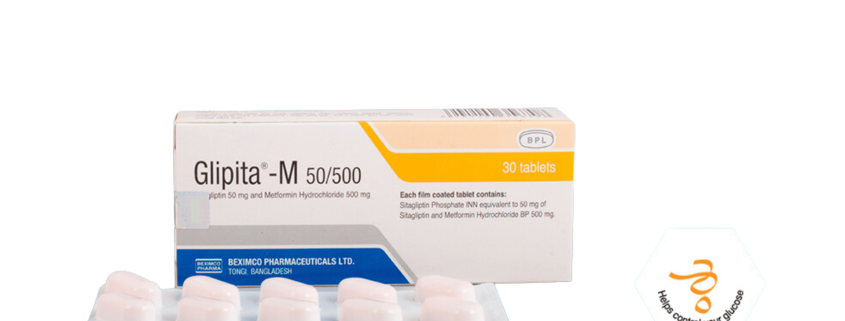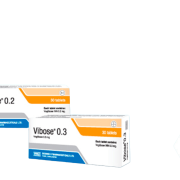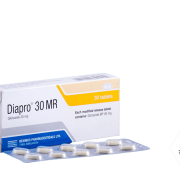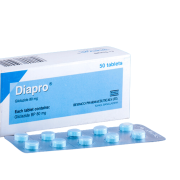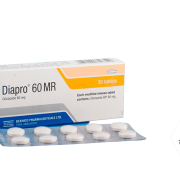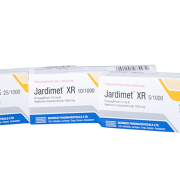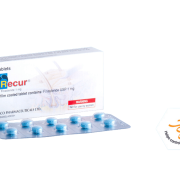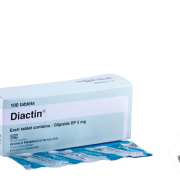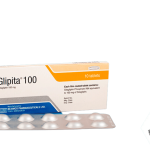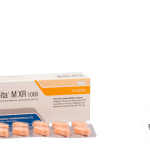Glipita M
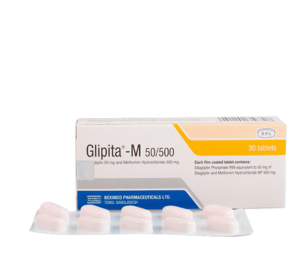
Generic Name: Sitagliptin/Metformin HCl
Dosage Form: Tablet
TG Name: Endocrine & Diabetes
What is Glipita-M?
Glipita-M is the preparation of sitagliptin and metformin. Sitagliptin phosphate, a dipeptidyl peptidase 4(DPP-4) inhibitor and metformin HCI, a member of the biguanide class. Glipita-M is indicated as an adjunct to diet and exercise to treat Type 2 diabetes where metfromin is not enough to improve glycemic control. FDA Approves Glipita-M For Type 2 Diabetes, Offering Powerful Glucose Control Of A DPP-4 Inhibitor And Metformin in a Single Tablet.
How Glipita works in our body?
Glipita-M (sitagliptin phosphate/metformin HCI) combines 2 antihyperglycemic agents with complementary mechanism of action to improve glycemic control in patients with type 2 diabetes. Sitagliptin increases the levels of 2 known active incretin hormones, glucagon-like peptide-1(GLP-1) and glucose-dependent insulinotropic polypeptide (GIP). When blood glucose concentrations are normal or elevated, GLP-1 and GIP increase insulin synthesis and release from pancreatic β-cells. GLP-1 also lowers glucagon secretion from pancreatic α-cells, leading to reduced hepatic glucose production. Metformin improves glucose tolerance in patients with type 2 diabetes, lowering both basal and postprandial plasma glucose. It decreases hepatic glucose production, decreases intestinal absorption of glucose, and improves insulin sensitivity by increasing peripheral glucose uptake and utilization.
What is the indications of Glipita-M?
As initial therapy in type 2 DM when diet & exercise do not provide adequate glycemic control. As adjunct to diet & exercise to improve glycemic control in type 2 DM inadequately controlled on metformin or sitagliptin alone, or combination sitagliptin & metformin, or triple combination sitagliptin, metformin or a sulfonylurea.
What are Dosage of Glipita-M?
The dosage of Glipita-M should be individualized on the basis of the patient’s current regimen, effectiveness and tolerabilty while not excceding the maximum recommended daily dose of 100 mg sitagliptin and 2000 mg metformin. Initial combination therapy or maintenance of combination therapy should be individualized and left to the discretion of the health care provider . Glipita-M shoul generally be given twice daily with meals , with gradual dose escalation , to reducethe gasterointestinal side effect due to metformin. The recommended starting dose not currently treated with metformin is 50 mg sitagliptin/500 mg metformin hydrochloride twice daily, with gradual dose escalation recommended to reduce gastrointestinal side effects associated with metformin .The starting dose in patient already treated with metformin should provide sitagliptin dosed as 50 mg twice daily (100 mg toatal daily dose )and the dose of metformin already being taken. For patients taking 850 mg twice daily the recommended starting dose of Glipita-M is 50 mg sitagliptin/1000 mg metformin hydrochloride twice daily.Patients treated with an insulin secrtagauge or insulin co-administration of Glipita-M with an insulin secrtagauge (e.g. sulfonylurea) or insulin may require lower dose of insulin secretagauge or insulin to reduce the risk of hypoglycemia .No studies have been performed specifically examining the safety and efficacy of Glipita-M in patients previously treated with other oral antihyperglycemic agents and switched to Glipita-M.
What is the Use of Glipita-M in Specific Populations:
Pregnancy: Pregnancy Category B. There are no adequate and well-controlled studies in pregnant women with Sitagliptin/Metformin HCl combination or its individual components; therefore, the safety of Sitagliptin/Metformin HCl combination in pregnant women is not known. Nursing Mothers: No studies in lactating animals have been conducted with the combined components of Sitagliptin/Metformin HCl combination. Pediatric Use: Safety and effectiveness of Sitagliptin/Metformin HCl combination in pediatric patients under 18 years have not been established.
Geriatric Use: Because sitagliptin and metformin are substantially excreted by the kidney, and because aging can be associated with reduced renal function, Sitagliptin/Metformin HCl combination should be used with caution as age increases. Care should be taken in dose selection and should be based on careful and regular monitoring of renal function.
Selected Important Risk Information:
Lactic acidosis is a rare but serious complication that can occur because of metformin accumulation. Glipita M is contraindicated in renal disease or renal dysfunction (serum creatinine levels >1.5 mg/dL in males and >1.4 mg/dL in females) or abnormal creatinine clearance.
What are the possible adverse reactions of Glipita-M?
Diarrhea, nausea, dyspepsia, flatulence, vomiting, headache, hypoglycaemia; abdominal pain, loss of appetite, metallic taste, hypersensitivity reactions.

